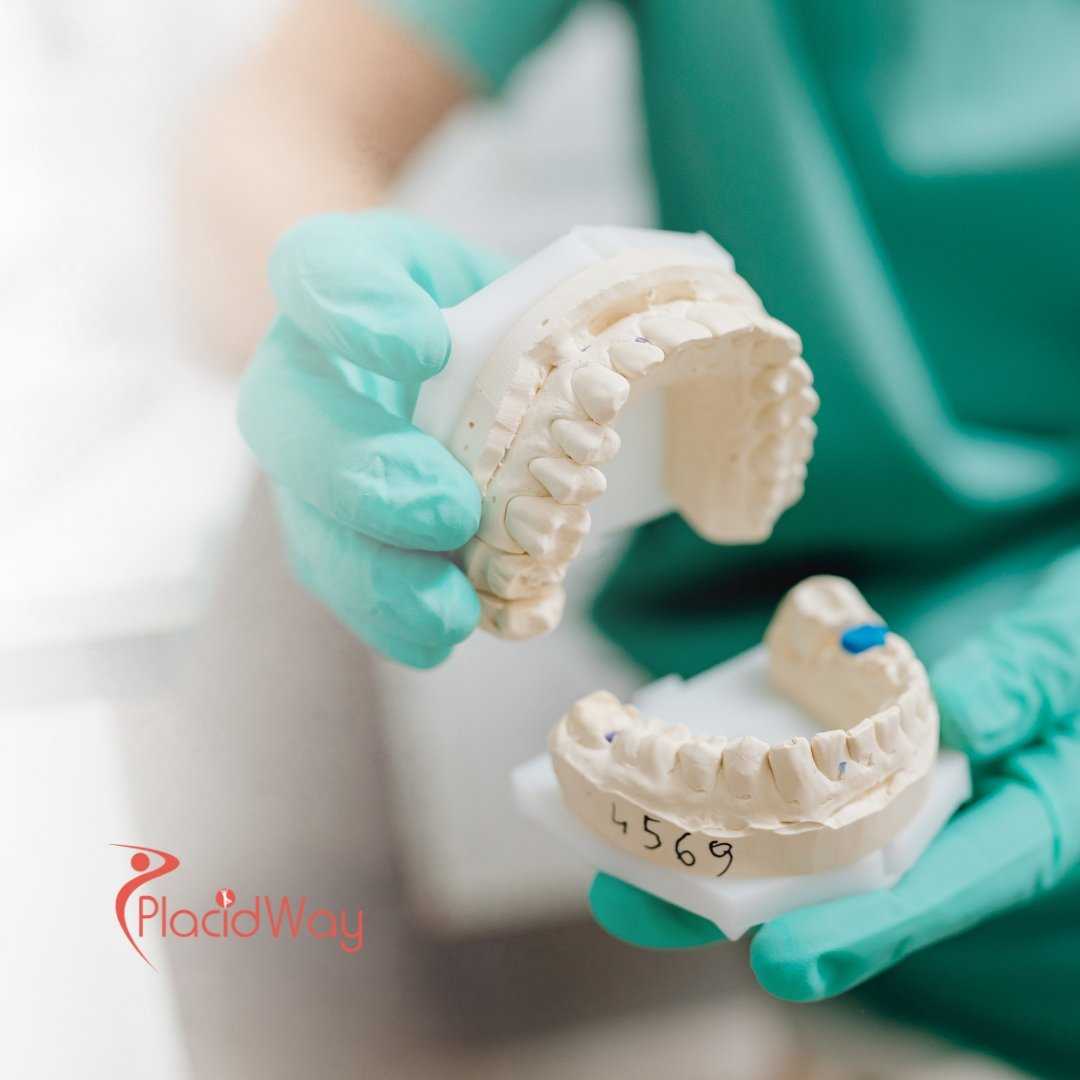Get an Affordable Dental Bridge in Colombia Today

Have you ever wondered if a picture-perfect smile is within your reach without emptying your savings account? For many, the high cost of dental work in countries like the United States and Canada can be a significant barrier. This is where the concept of dental tourism comes into play, with Colombia emerging as a leading destination. If you're specifically looking into replacing a missing tooth, you might be asking, "How much is a dental bridge in Colombia?" The answer is refreshingly affordable. A standard 3-unit dental bridge in Colombia can cost as little as $998, a fraction of what you might pay back home. This significant price difference doesn't mean a compromise on quality. In fact, Colombian dental clinics are known for their high standards, modern technology, and highly qualified dentists.
This detailed guide will walk you through everything you need to know about getting a dental bridge in Colombia. We will explore the various types of bridges available, the factors that influence the cost, and what you can expect during your dental journey. From porcelain to zirconia, and from traditional bridges to those supported by implants, we’ll cover all the options. We'll also delve into the qualifications of Colombian dentists and the high quality of care you can anticipate. So, if you're considering a trip to the beautiful country of Colombia for your dental needs, this comprehensive overview will provide you with all the essential information to make an informed decision.
What is the average cost of a dental bridge in Colombia?
The cost of a dental bridge in Colombia is significantly lower than in many Western countries, making it an attractive option for dental tourists. The price is largely determined by the number of pontics (artificial teeth) and crowns required. For instance, a simple 2-unit bridge, which might be used to replace a single missing tooth with one supporting crown, will be the most affordable option. As the number of missing teeth increases, so does the complexity and cost of the bridge.
It's important to remember that these are average prices. The final quote you receive from a dental clinic in Colombia can be influenced by several factors, which we will discuss in more detail. However, even with these variations, the savings are substantial. Patients can often save 50-70% on their dental work compared to what they would pay in the US or Europe. This cost-effectiveness, combined with high-quality care, is what makes Colombia a premier destination for dental procedures.
What are the different types of dental bridges available in Colombia and their costs?
Understanding the different types of dental bridges is crucial to determining the best solution for your needs and budget. Here's a breakdown of the common types available in Colombia:
-
Traditional Dental Bridges: This is the most common type of bridge and consists of one or more pontics held in place by dental crowns that are cemented onto the adjacent natural teeth. The cost is generally based on the number of crowns and pontics. A porcelain bridge crown can cost around $500.
-
Cantilever Bridges: This type of bridge is used when there are adjacent teeth on only one side of the missing tooth or teeth. It is not as common and is generally not recommended for the back of the mouth where biting forces are greater. The cost is similar to a traditional bridge but depends on the specific case.
-
Maryland Bonded Bridges: Also known as a resin-bonded bridge, this type has a metal or porcelain framework with wings on each side. These wings are bonded to the back of the adjacent teeth. This is a more conservative option as it doesn't require extensive reshaping of the neighboring teeth.
-
Implant-Supported Bridges: For patients with multiple missing teeth, an implant-supported bridge is an excellent and durable solution. Instead of being supported by natural teeth, the bridge is anchored by dental implants. A single dental implant in Colombia can cost between $700 and $1,500, so the total cost of an implant-supported bridge will be higher, reflecting the number of implants needed.
Here is a table summarizing the estimated costs:
What factors influence the cost of a dental bridge in Colombia?
While the base price of a dental bridge in Colombia is already affordable, it's essential to understand the variables that can impact the final cost. This will help you budget accurately for your dental trip.
-
Number of Missing Teeth: This is the most significant factor. The more teeth that need to be replaced, the larger the bridge will be, and consequently, the higher the cost.
-
Materials Used: Dental bridges can be made from various materials, each with its own price point.
-
Porcelain-fused-to-metal (PFM): A strong and durable option with a metal base and a porcelain veneer. It's a cost-effective choice.
-
All-Porcelain or All-Ceramic: These offer the most natural appearance and are an excellent choice for front teeth. They are typically more expensive than PFM bridges.
-
Zirconia: A very strong and aesthetically pleasing ceramic material. Zirconia bridges are known for their durability and natural look, making them a premium option.
-
-
Dentist's Expertise: A highly experienced and reputable dentist may charge more for their services. However, their expertise can often lead to better long-term outcomes.
-
Clinic's Location: The cost of living and running a business varies between cities in Colombia. Clinics in major cities like Bogotá, Medellín, and Cartagena might have slightly higher prices than those in smaller towns.
-
Additional Procedures: In some cases, you may need additional treatments before getting a dental bridge. These can include tooth extractions, root canals, or gum disease treatment, all of which will add to the overall cost.
What is typically included in a dental bridge package in Colombia?
When you receive a quote for a dental bridge in Colombia, it's important to clarify what is included in the price. Most reputable clinics will provide a comprehensive package that covers the essential aspects of the treatment.
Typically, a dental bridge package will include:
-
Initial Consultation and Examination: This includes a thorough assessment of your oral health and a discussion of your treatment options.
-
Diagnostic Tests: This usually involves X-rays to evaluate the health of the supporting teeth and the underlying jawbone.
-
Tooth Preparation: The process of preparing the abutment (supporting) teeth for the crowns.
-
Temporary Bridge: A temporary bridge is often placed while your permanent bridge is being custom-made in a dental laboratory.
-
Permanent Bridge and Placement: The cost of the final bridge and the procedure to cement it into place.
-
Follow-up Appointments: A check-up to ensure the bridge fits correctly and that you are comfortable.
Some dental tourism packages may also offer additional services to make your trip more convenient, such as airport pickup and drop-off, accommodation arrangements, and even local tours. Always confirm the specifics with the clinic beforehand.
Are there any additional costs I should be aware of?
To ensure a smooth and stress-free dental tourism experience, it's wise to budget for potential additional costs beyond the price of the dental bridge itself. While clinics in Colombia are generally transparent about their pricing, certain unforeseen issues can arise.
Potential additional costs to consider:
-
Root Canal Treatment: If one of the abutment teeth has extensive decay or is infected, a root canal may be necessary before placing a crown. The cost of a root canal in Colombia is significantly lower than in the US, but it is an extra expense.
-
Tooth Extractions: If a damaged tooth needs to be removed to make way for the bridge, this will be an additional charge.
-
Gum Disease Treatment: Healthy gums are essential for the long-term success of a dental bridge. If you have gingivitis or periodontitis, you may need treatment before the bridge procedure.
-
Bone Grafting: This is more relevant for implant-supported bridges. If you lack sufficient bone density to support an implant, a bone graft may be required.
-
Travel and Accommodation: Don't forget to factor in the cost of your flights, accommodation, food, and any leisure activities you plan to enjoy during your stay in Colombia.
How long does it take to get a dental bridge in Colombia?
The efficiency of the dental process in Colombia is another major draw for international patients. A traditional dental bridge procedure typically involves the following steps:
-
First Visit: During your initial appointment, the dentist will prepare the abutment teeth by reshaping them to make room for the crowns. An impression of your teeth will then be taken, which will be sent to a dental lab to create your custom bridge. A temporary bridge will be placed to protect the prepared teeth.
-
Dental Lab Fabrication: The dental laboratory will use the impressions to fabricate your permanent bridge. This process usually takes a few days.
-
Second Visit: Once your permanent bridge is ready, you will return to the clinic. The dentist will remove the temporary bridge and check the fit and color of the new one. After any necessary adjustments, the permanent bridge will be cemented into place.
For implant-supported bridges, the timeline is longer as it involves the surgical placement of the implants and a healing period (osseointegration) of several months before the bridge can be attached.
Is the quality of dental care in Colombia reliable?
The affordability of dental work in Colombia does not come at the expense of quality. In fact, Colombia has become a hub for medical and dental tourism precisely because it offers world-class care at a fraction of the cost.
Here are some reasons why you can trust the quality of dental care in Colombia:
-
Highly Qualified Dentists: Many Colombian dentists have pursued postgraduate studies and training in the United States, Europe, and other parts of the world. They are often members of international dental associations and stay up-to-date with the latest advancements in dentistry.
-
Modern Clinics and Technology: Dental clinics in major Colombian cities like Bogotá, Medellín, and Cartagena are typically equipped with cutting-edge technology, including digital X-rays, CAD/CAM for creating restorations, and laser dentistry equipment.
-
International Standards: Many top clinics in Colombia adhere to international standards of hygiene and patient care, ensuring a safe and comfortable experience.
-
Positive Patient Reviews: A quick online search will reveal numerous positive testimonials and reviews from international patients who have had successful dental treatments in Colombia.
What are the qualifications of dentists in Colombia?
The education and training of dentists in Colombia are comprehensive, ensuring they are well-equipped to provide high-quality care. The path to becoming a dentist in Colombia involves:
-
Five Years of Dental School: Aspiring dentists must complete a five-year undergraduate program at an accredited university.
-
Licensure: Upon graduation, they must be licensed by the Colombian Ministry of Health to practice dentistry.
-
Specialization: Many dentists choose to specialize in a particular field of dentistry, which requires additional years of postgraduate study. For procedures like dental bridges, you would ideally look for a prosthodontist.
-
Continuing Education: To maintain their licenses and stay current with the latest techniques and technologies, Colombian dentists are required to participate in ongoing continuing education courses.
When choosing a dentist in Colombia, it's always a good idea to research their qualifications, experience, and any international affiliations they may have. Reputable clinics will be happy to provide this information.
How do I choose a dental clinic in Colombia?
Making the right choice of clinic is crucial for a successful dental tourism experience. Here are some tips for selecting a dental clinic for your dental bridge in Colombia:
-
Do Your Research: Start by searching for clinics in your preferred Colombian city. Look at their websites, paying attention to the dentists' qualifications, the technology they use, and before-and-after photos of their work.
-
Read Patient Reviews: Look for reviews and testimonials from previous international patients on independent platforms. This can give you valuable insights into the patient experience at a particular clinic.
-
Communication is Key: Choose a clinic with English-speaking staff to ensure clear communication throughout the process. A virtual consultation via video call can be a great way to "meet" the dentist and ask any questions you may have.
-
Ask for a Detailed Quote: Request a detailed treatment plan and quote that outlines all the costs involved. This will help you avoid any surprises later on.
-
Check for Accreditations: See if the clinic or its dentists have any international accreditations or affiliations, as this can be a good indicator of their commitment to quality.
Why is Colombia a good destination for dental tourism?
Colombia has firmly established itself as a top destination for those seeking high-quality, affordable dental care. The benefits of choosing Colombia for your dental bridge go beyond just the cost savings.
-
Significant Cost Savings: As we've discussed, the primary driver for many is the substantial savings on dental procedures.
-
World-Class Quality: You don't have to compromise on quality to get a lower price. Colombian dental clinics are known for their modern facilities and highly trained professionals.
-
A Beautiful Vacation Destination: Why not combine your dental treatment with a vacation? Colombia offers stunning landscapes, vibrant cities, and a rich cultural heritage. From the historic streets of Cartagena to the modern metropolis of Medellín, there is much to explore.
-
Warm and Welcoming Culture: Colombians are known for their hospitality and warmth, which can make your dental tourism experience all the more pleasant.
-
Accessibility: With international airports in major cities, Colombia is easily accessible from North America and Europe.
What is the process of getting a dental bridge as a dental tourist in Colombia?
The process is designed to be as smooth and efficient as possible for international patients. Here's a typical step-by-step guide:
-
Initial Contact and Online Consultation: Reach out to your chosen clinic with your dental concerns. You may be asked to provide photos of your teeth or any existing X-rays. A virtual consultation can then be scheduled to discuss your treatment plan and get an initial cost estimate.
-
Travel and Arrival: Once you are comfortable with the proposed plan, you can book your travel to Colombia. Many clinics can offer advice on accommodation and local transportation.
-
In-Person Consultation and Treatment: Upon arrival at the clinic, you will have a comprehensive in-person consultation and examination. The treatment for your dental bridge will then commence as described earlier.
-
Recovery and Exploration: While your permanent bridge is being made, you will have some free time to recover and explore the local area.
-
Final Placement and Follow-Up: You will have your final appointment to have the permanent bridge placed. A follow-up visit may be scheduled to ensure everything is perfect before you head home.
How do I care for my new dental bridge?
To ensure your dental bridge lasts for many years, it's crucial to maintain excellent oral hygiene. A well-cared-for bridge can last for 15 years or even longer.
Here are some essential care tips:
-
Brush Twice a Day: Use a soft-bristled toothbrush and fluoride toothpaste to clean your bridge and natural teeth.
-
Floss Daily: Cleaning between your teeth and under the pontic is vital to prevent plaque buildup and decay. A floss threader or a special type of floss designed for bridges can make this easier.
-
Use an Antiseptic Mouthwash: Rinsing with an antiseptic mouthwash can help reduce bacteria in your mouth.
-
Maintain a Healthy Diet: Limit your intake of sugary and acidic foods and drinks, which can contribute to tooth decay.
-
Regular Dental Check-ups: Continue to visit your local dentist for regular check-ups and cleanings to ensure the health of your bridge and surrounding teeth.
Are there any risks associated with getting a dental bridge?
While a dental bridge is a safe and effective way to replace missing teeth, it's important to be aware of the potential risks. Choosing a qualified dentist and practicing good oral hygiene can significantly minimize these risks.
Potential risks include:
-
Decay of Abutment Teeth: The natural teeth supporting the bridge are still susceptible to decay. If plaque is allowed to accumulate around the crowns, it can lead to cavities.
-
Bridge Failure: In rare cases, the bridge can become loose or fall out. This is more likely to happen if the supporting teeth are not strong enough or if there is significant decay.
-
Nerve Damage: During the preparation of the abutment teeth, there is a small risk of damage to the nerve, which could necessitate a root canal.
-
Gum Problems: Poor oral hygiene can lead to gum inflammation and disease around the bridge.
By following your dentist's aftercare instructions and maintaining a diligent oral hygiene routine, you can enjoy the benefits of your new smile for years to come.
What materials are dental bridges in Colombia made from?
The material used to construct your dental bridge is a key decision that will impact its appearance, durability, and price. Colombian dental labs offer a range of modern materials:
-
Porcelain-Fused-to-Metal (PFM): This is a time-tested and reliable option. A metal alloy base provides strength and stability, while the porcelain overlay is matched to the color of your natural teeth. PFM bridges are a good balance of durability and aesthetics at a more affordable price point.
-
All-Porcelain (All-Ceramic): For those seeking the most natural-looking restoration, all-porcelain bridges are an excellent choice. They are metal-free and have a translucency that mimics natural tooth enamel. They are particularly well-suited for replacing front teeth.
-
Zirconia: Zirconia is a type of ceramic that is exceptionally strong and resistant to chipping and cracking. It can be layered with porcelain for a very natural appearance or used as a solid block for maximum durability, making it a great option for bridges in the back of the mouth that endure significant biting forces. Zirconia is considered a premium material and is priced accordingly.
Your dentist in Colombia will discuss the pros and cons of each material with you and recommend the best option based on the location of the bridge, your aesthetic goals, and your budget.
Ready to explore your options for a dental bridge in Colombia? PlacidWay can help you connect with top-rated dental clinics and specialists. Let us assist you in finding the perfect solution for your smile and your budget.


.png)





.png)

.png)






Share this listing